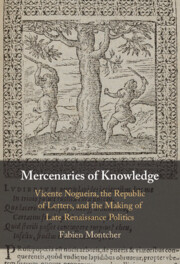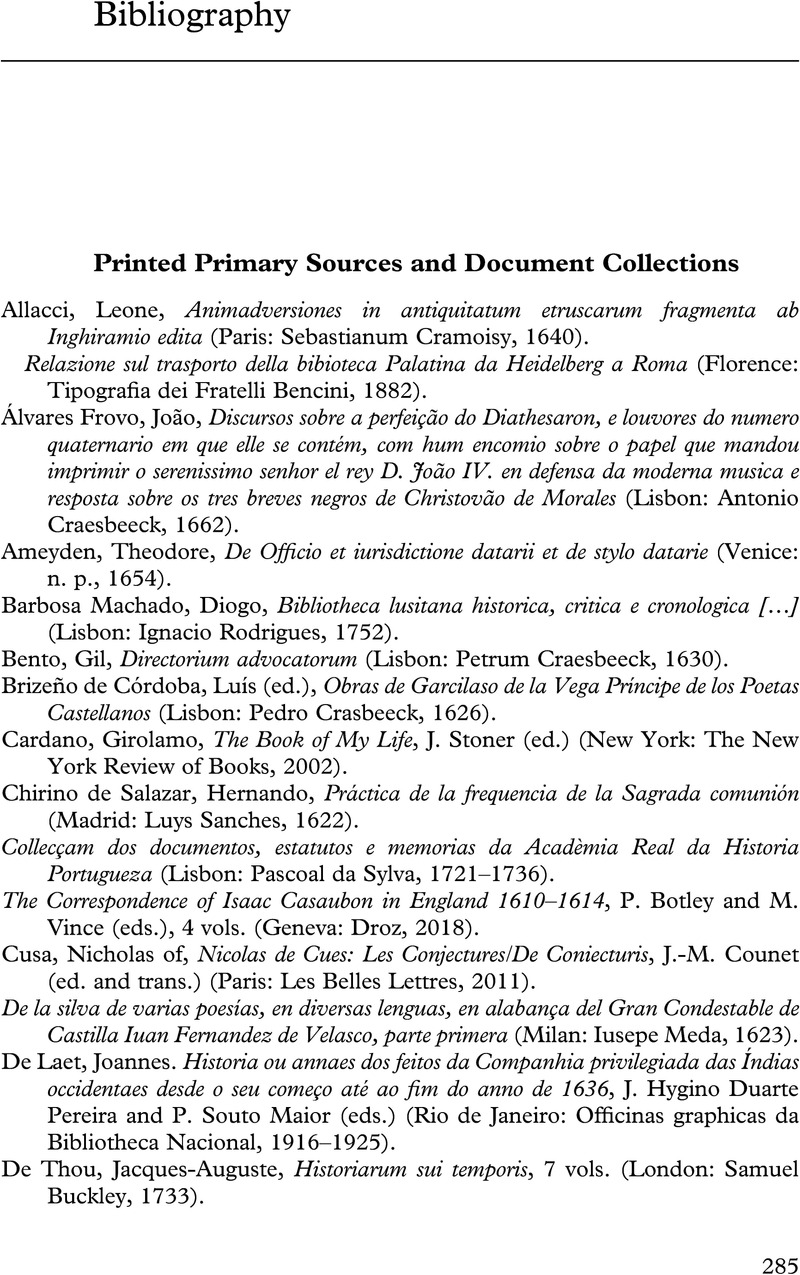 Mercenaries of Knowledge
Mercenaries of Knowledge Book contents
- Mercenaries of Knowledge
- Mercenaries of Knowledge
- Copyright page
- Contents
- Acknowledgments
- Abbreviations (Archives and Libraries)
- Introduction
- Part I Growing Up under the Pax Hispanica
- Part II The Severing: Trial and Exile
- Part III Bibliopolitics and Conflict Management
- Conclusion
- Bibliography
- Index
- References
Bibliography
Published online by Cambridge University Press: 14 September 2023
- Mercenaries of Knowledge
- Mercenaries of Knowledge
- Copyright page
- Contents
- Acknowledgments
- Abbreviations (Archives and Libraries)
- Introduction
- Part I Growing Up under the Pax Hispanica
- Part II The Severing: Trial and Exile
- Part III Bibliopolitics and Conflict Management
- Conclusion
- Bibliography
- Index
- References
Summary

- Type
- Chapter
- Information
- Mercenaries of KnowledgeVicente Nogueira, the Republic of Letters, and the Making of Late Renaissance Politics, pp. 285 - 325Publisher: Cambridge University PressPrint publication year: 2023


